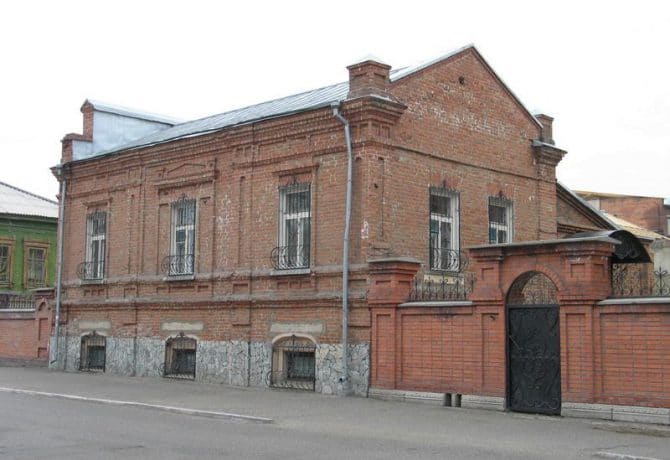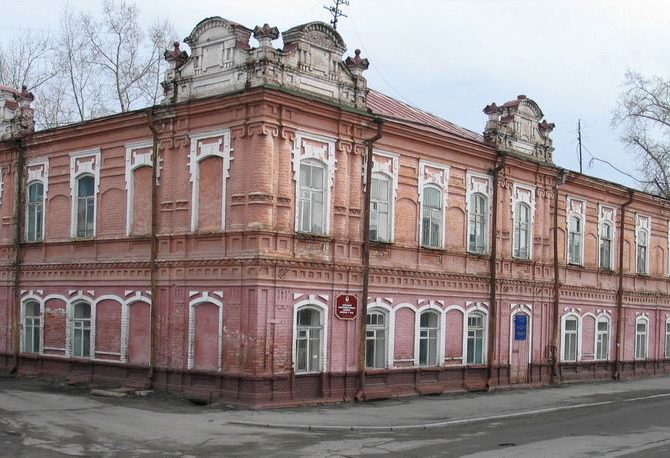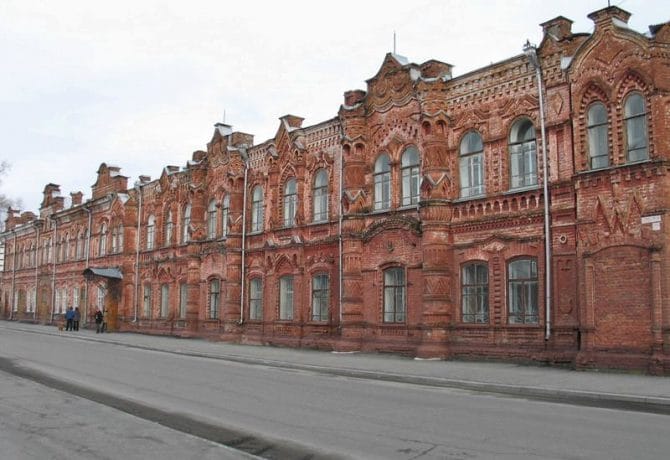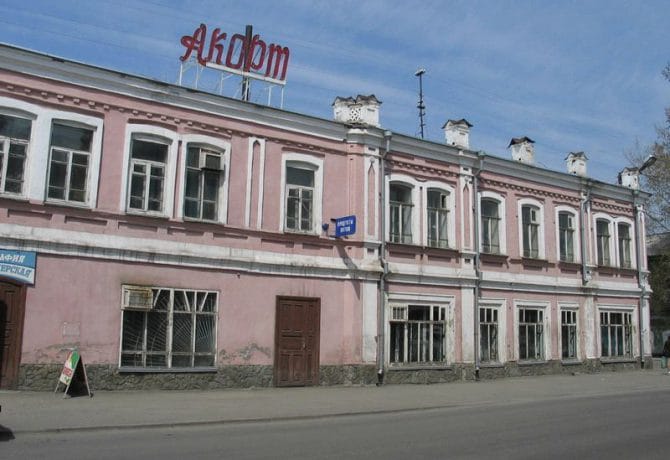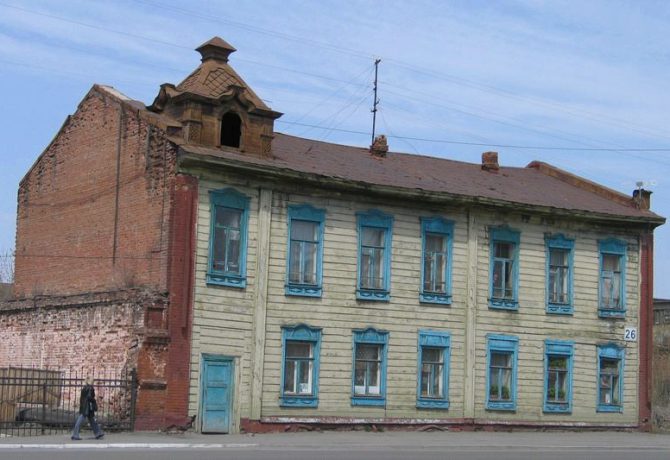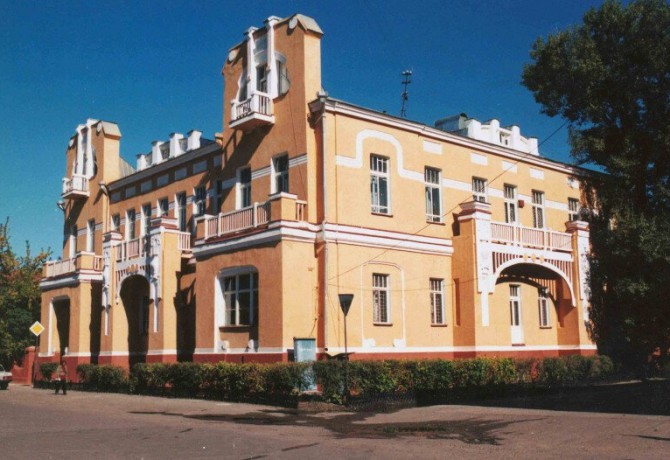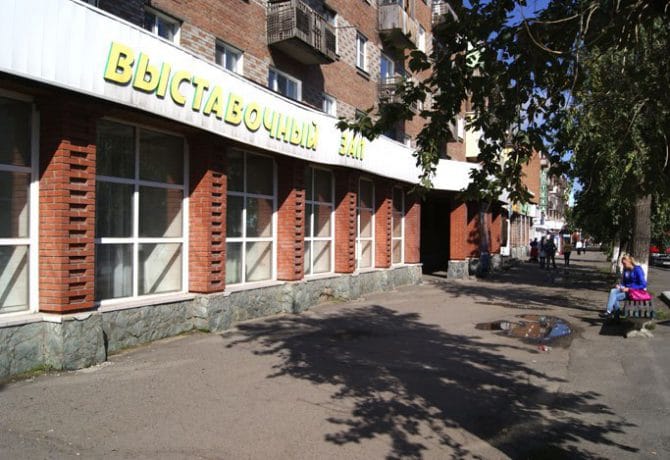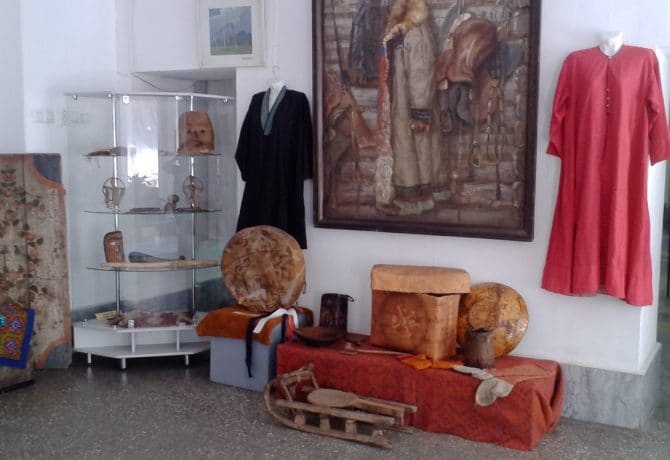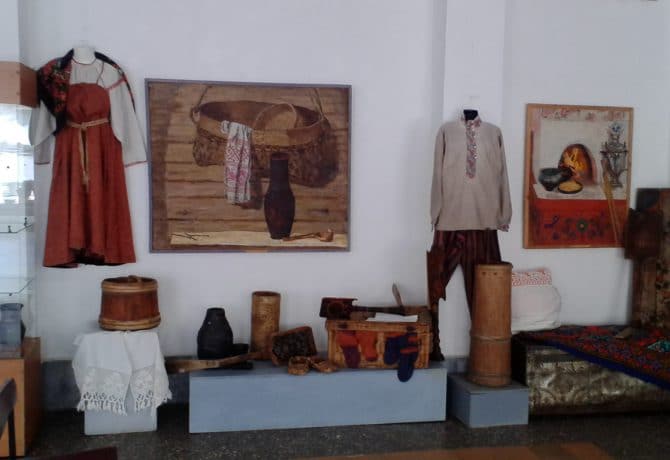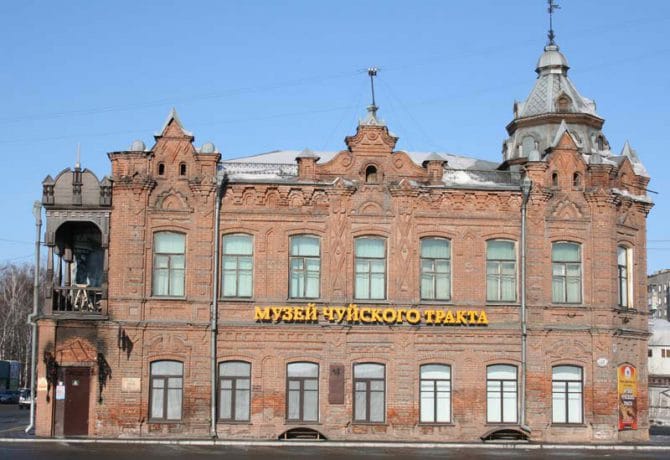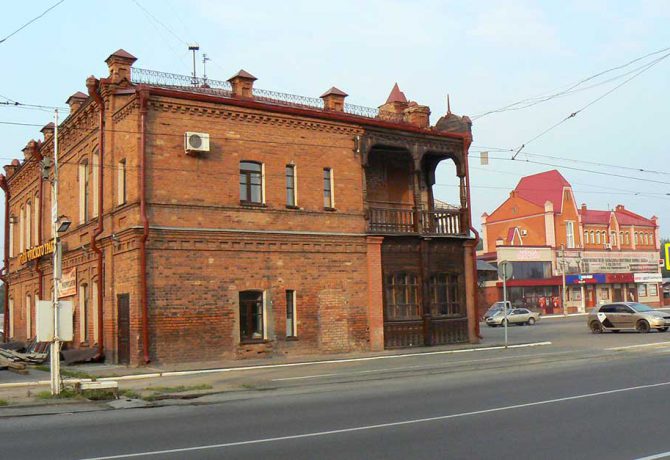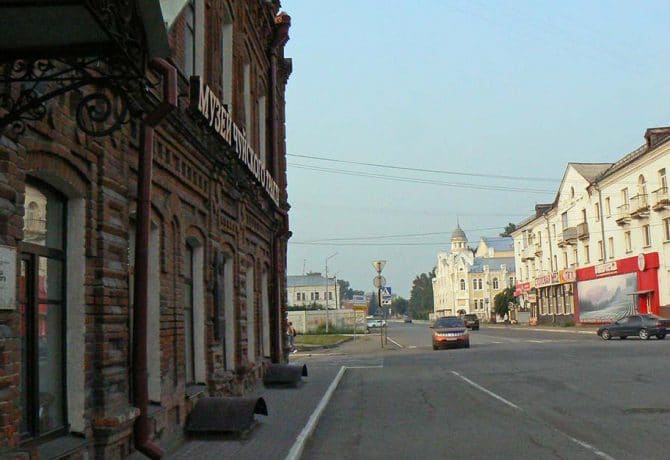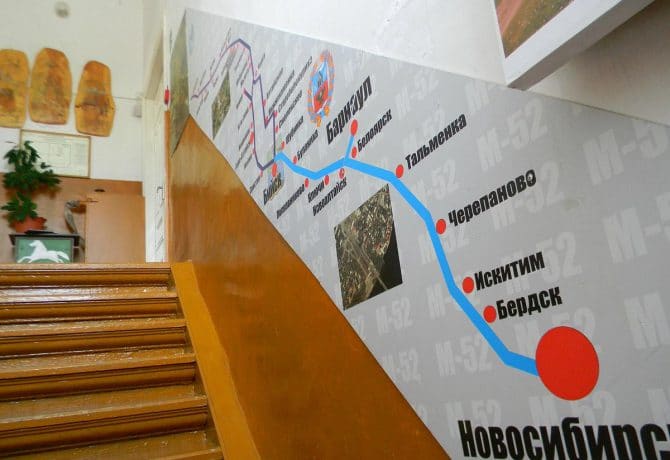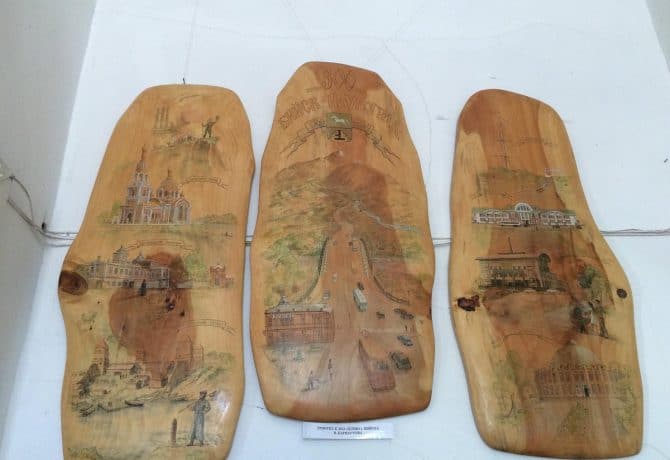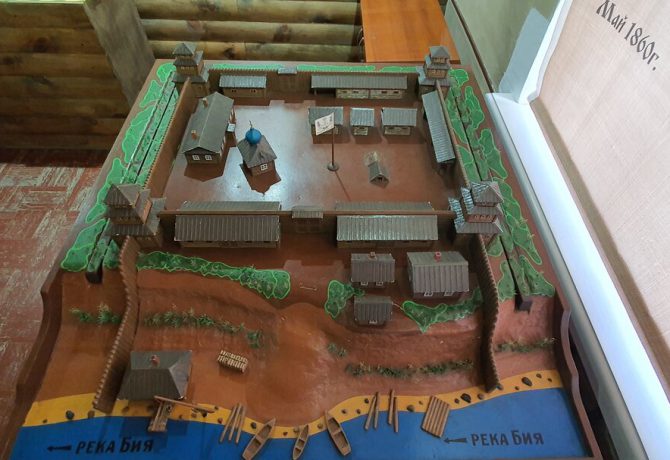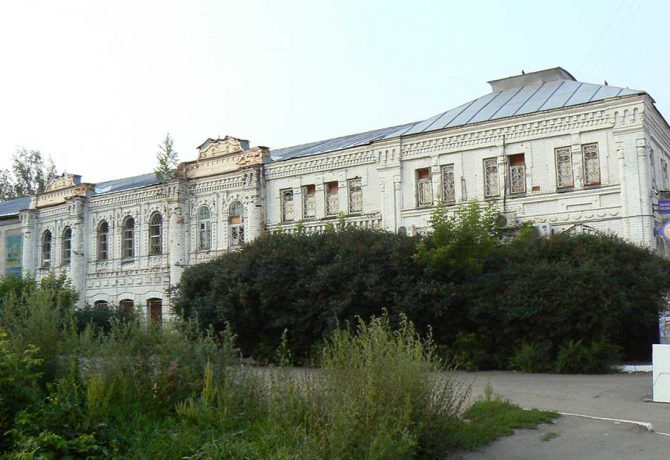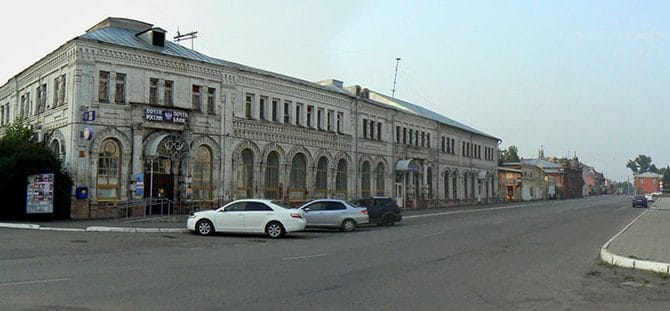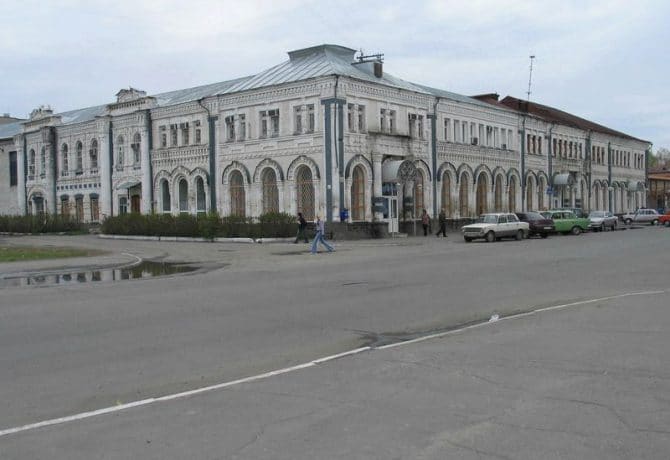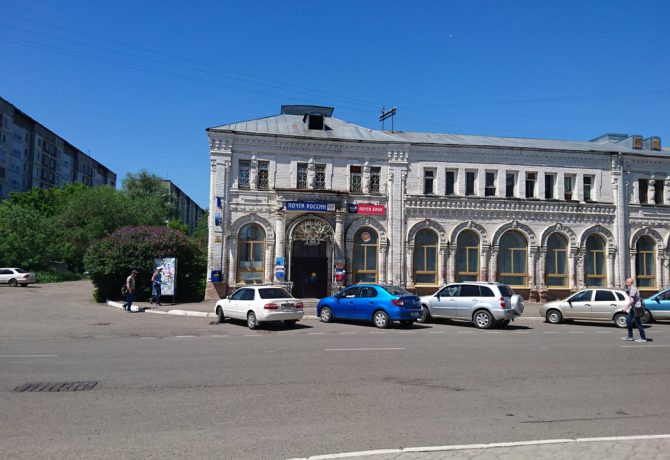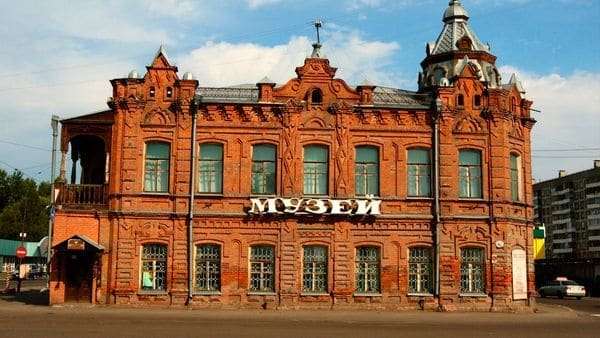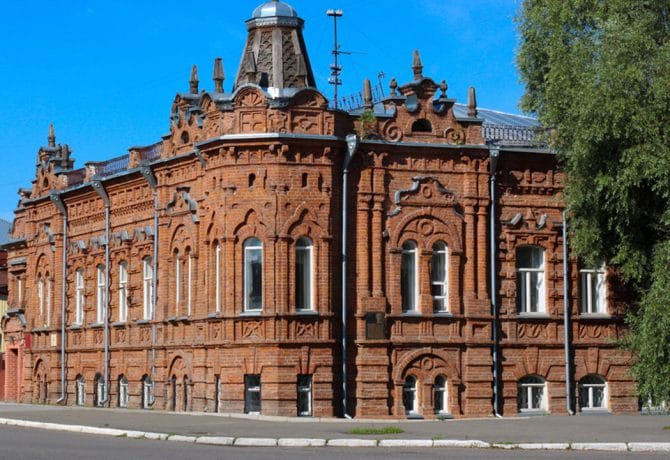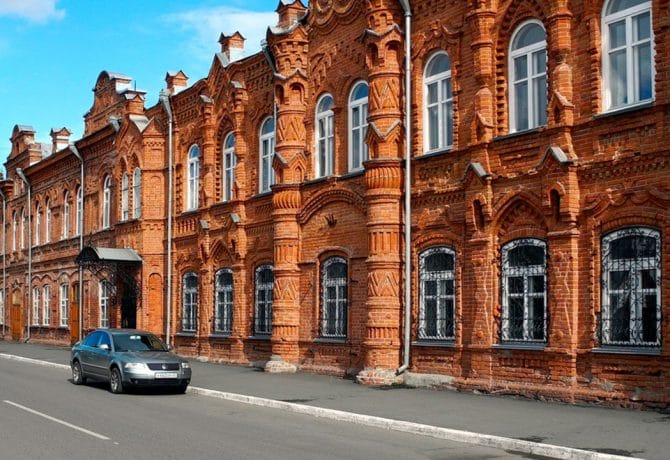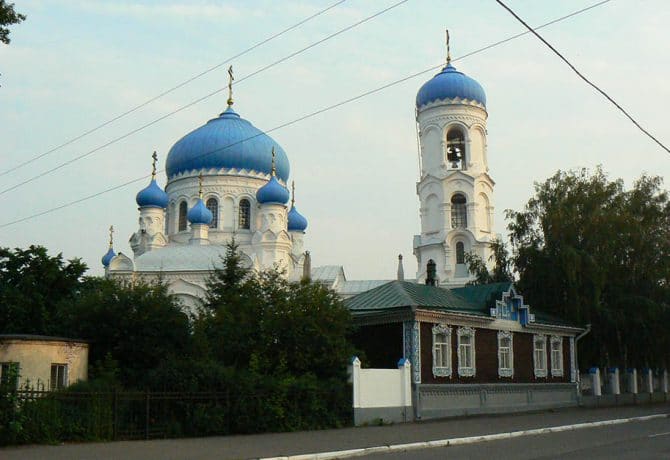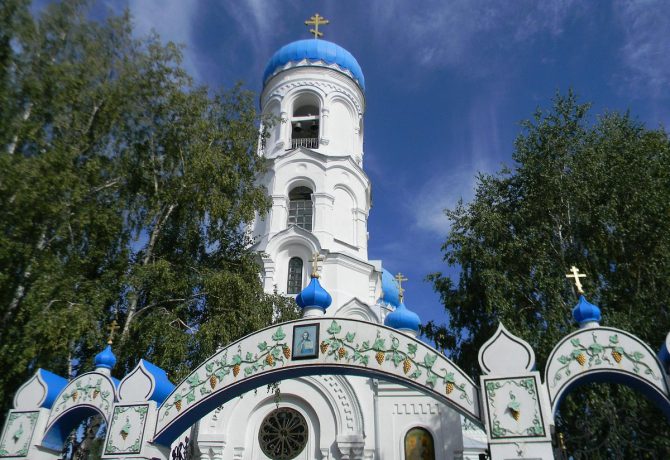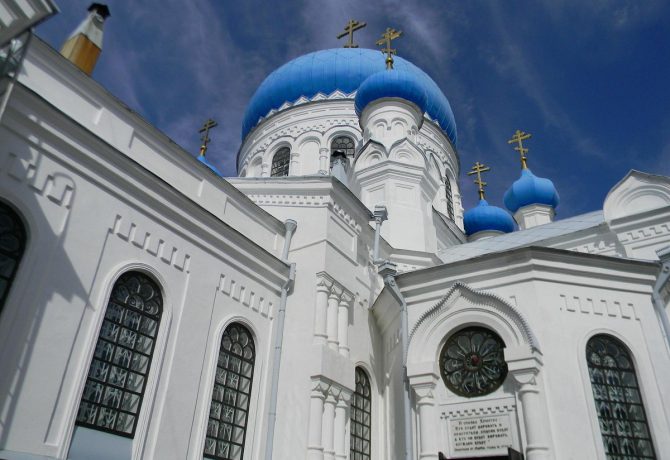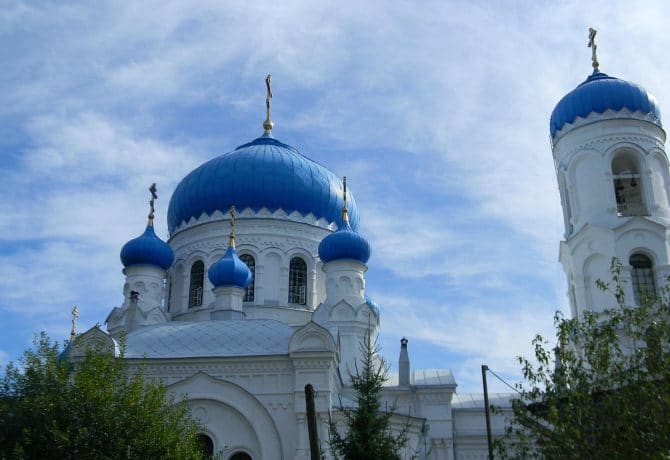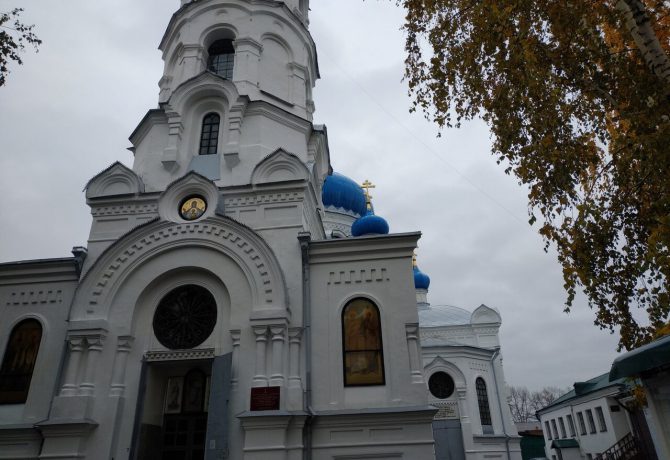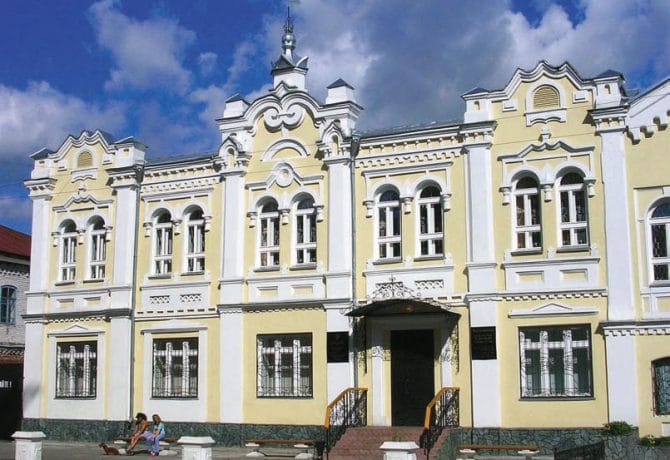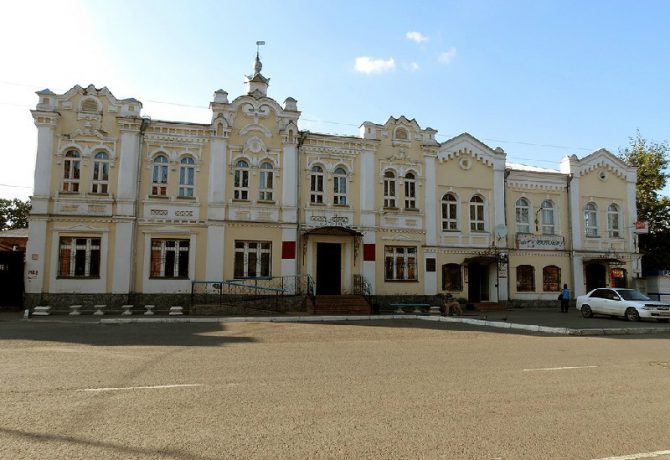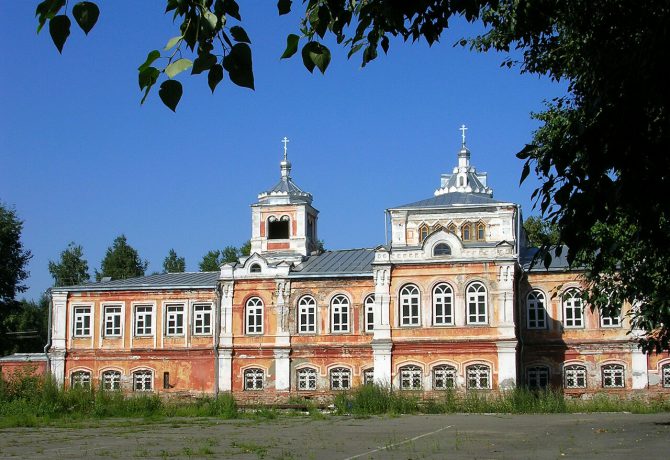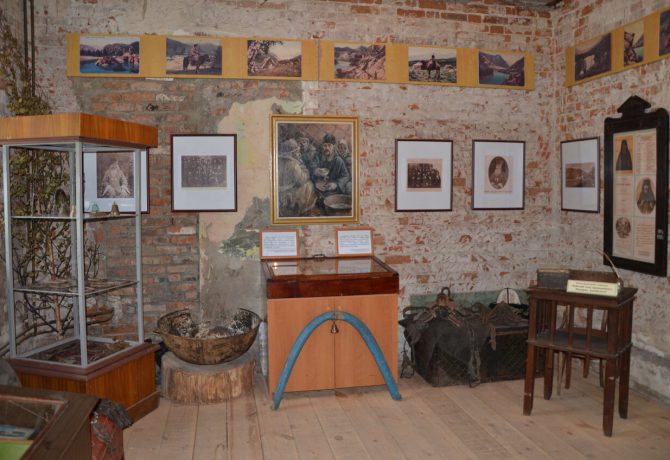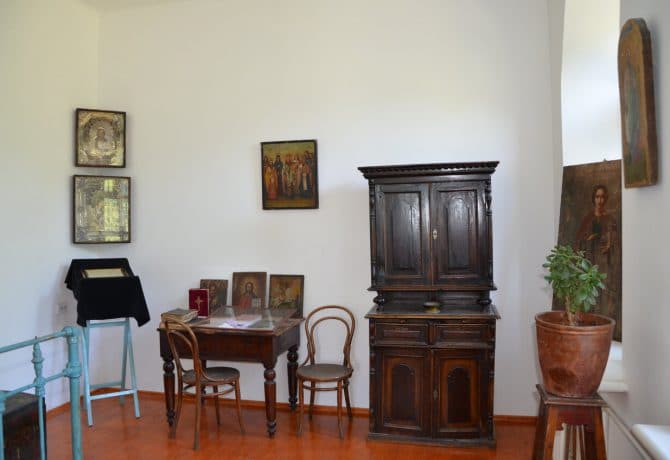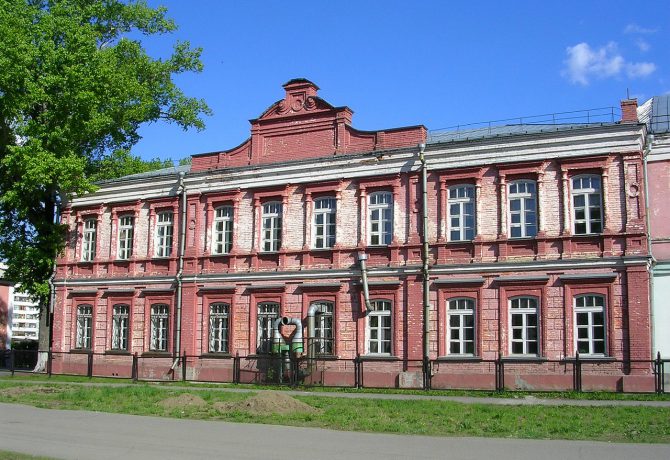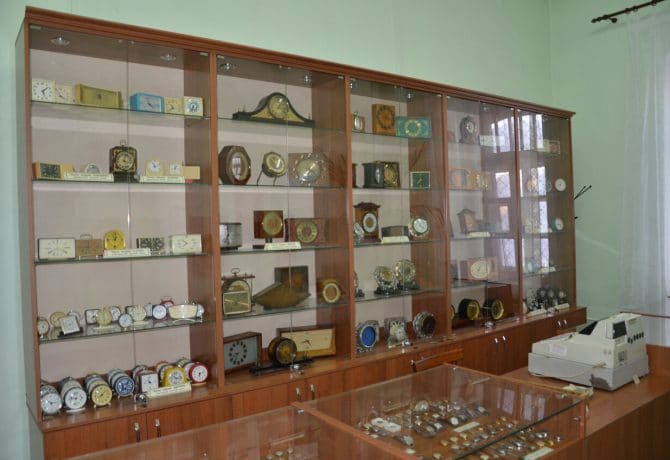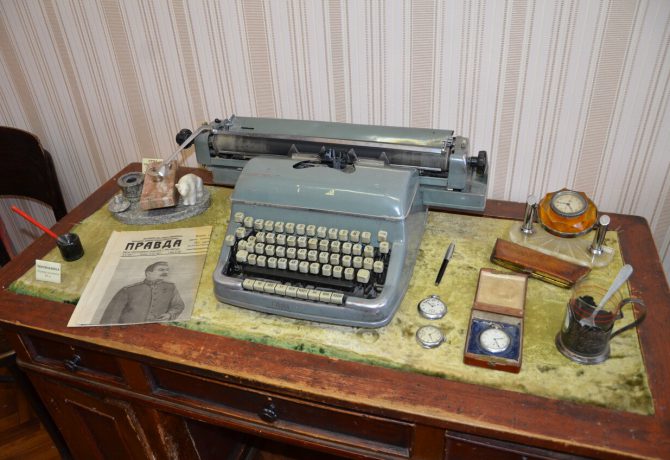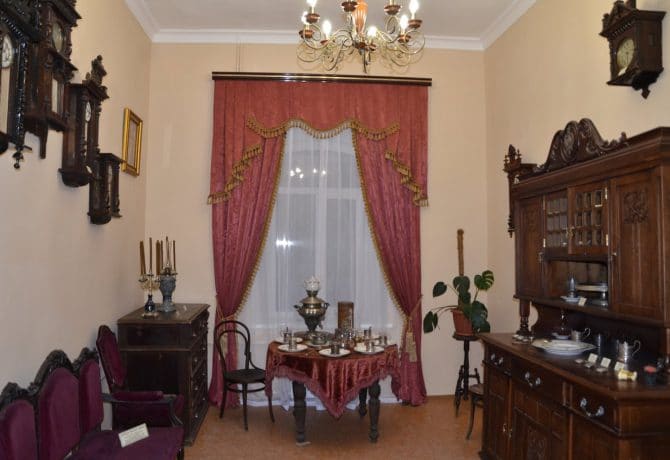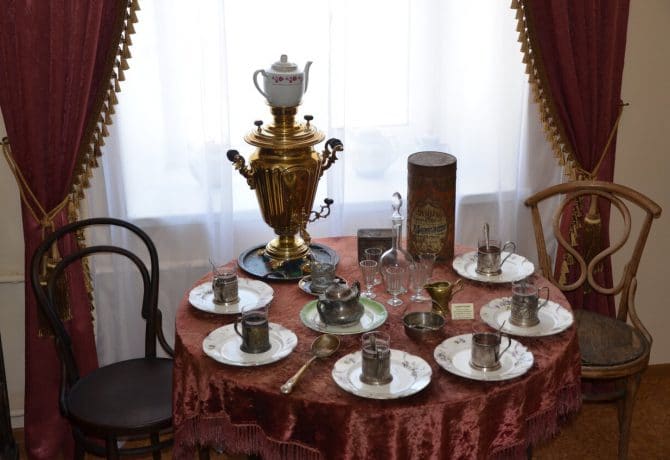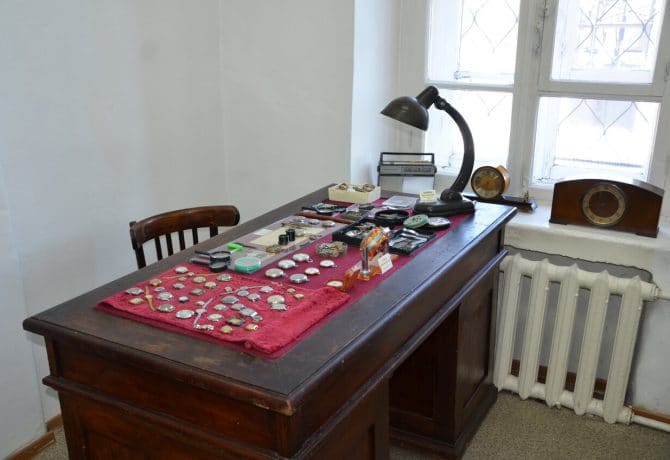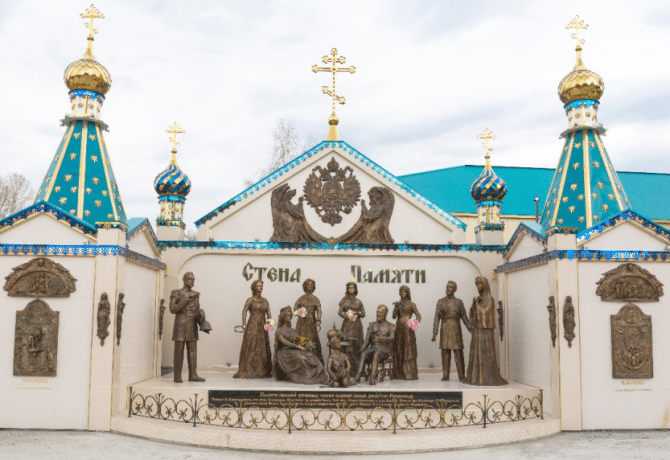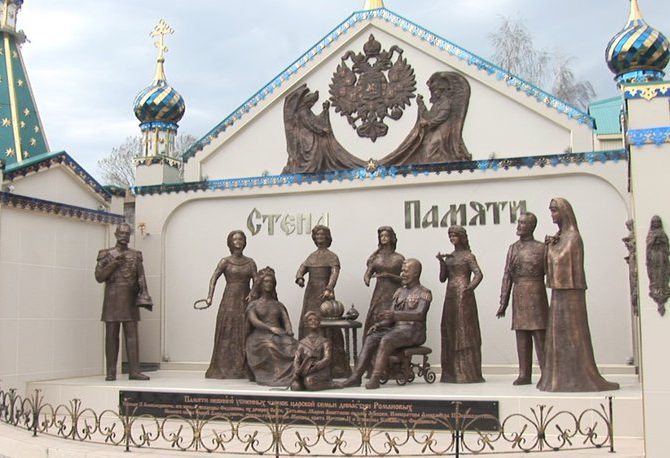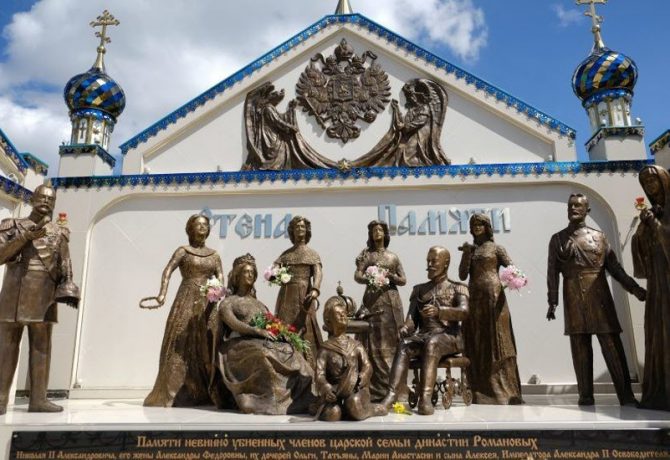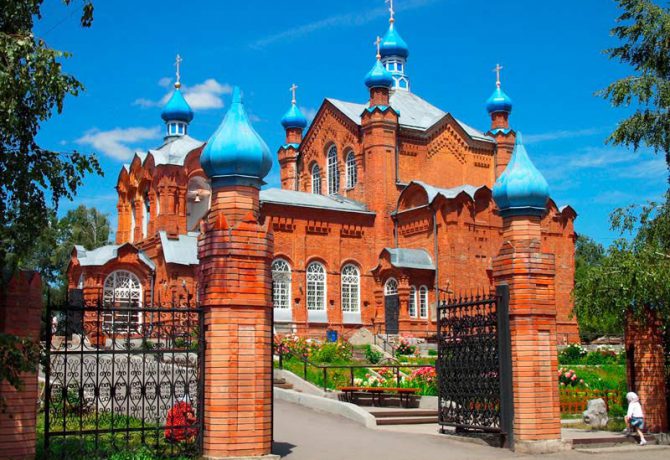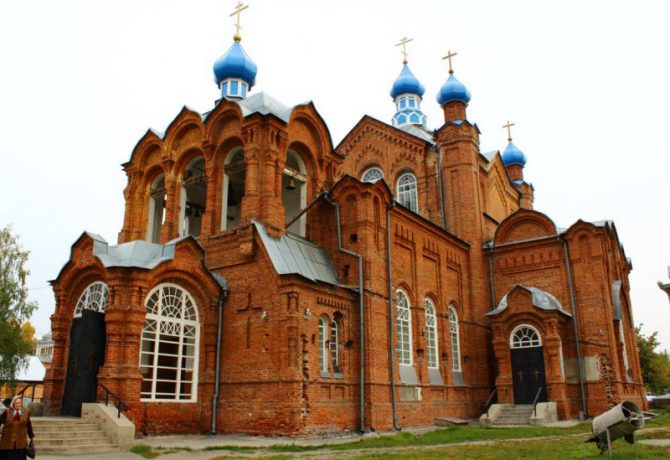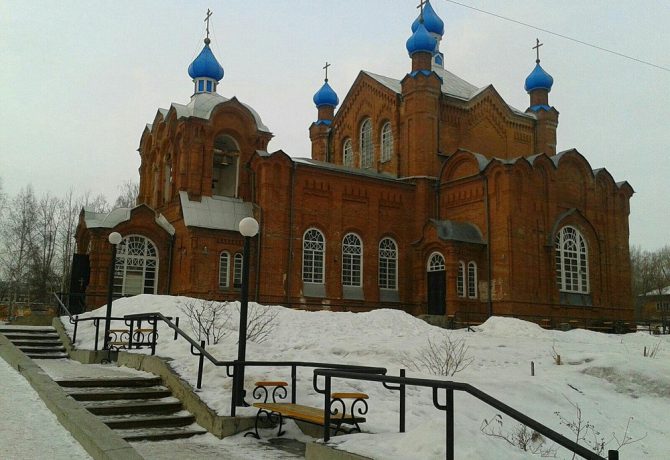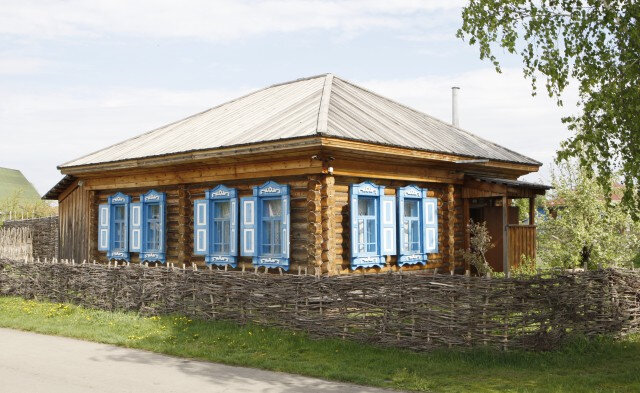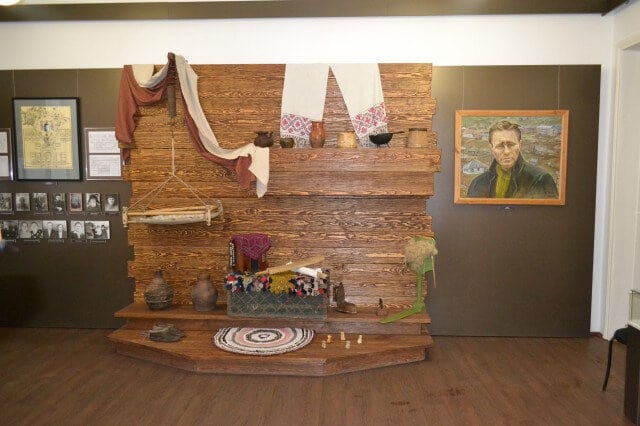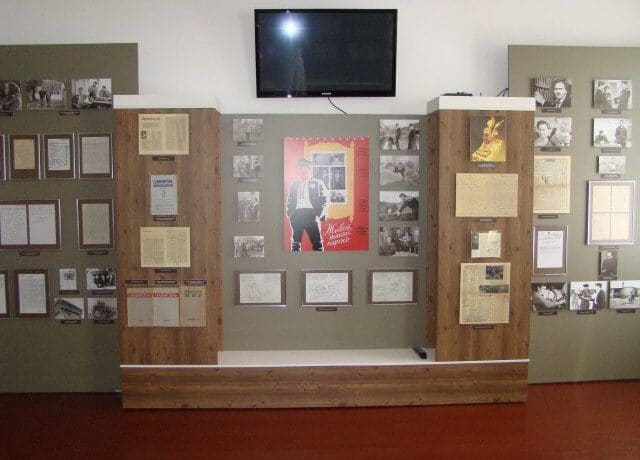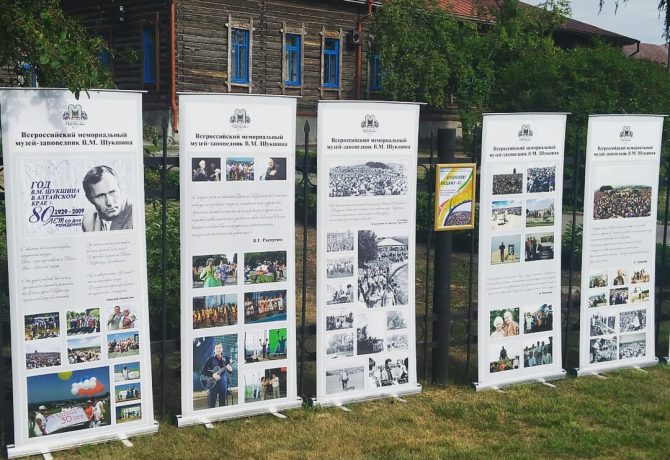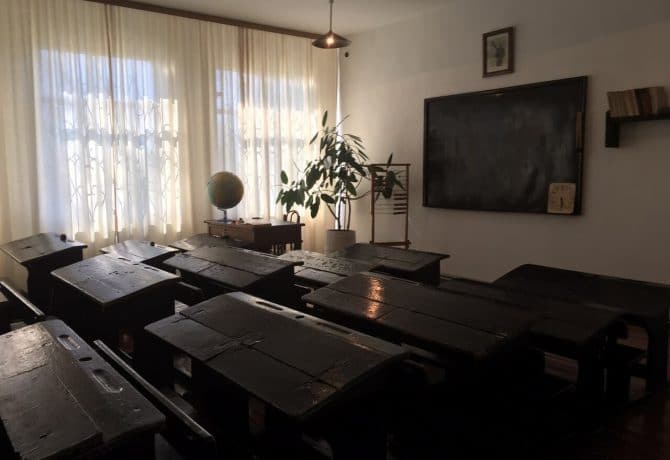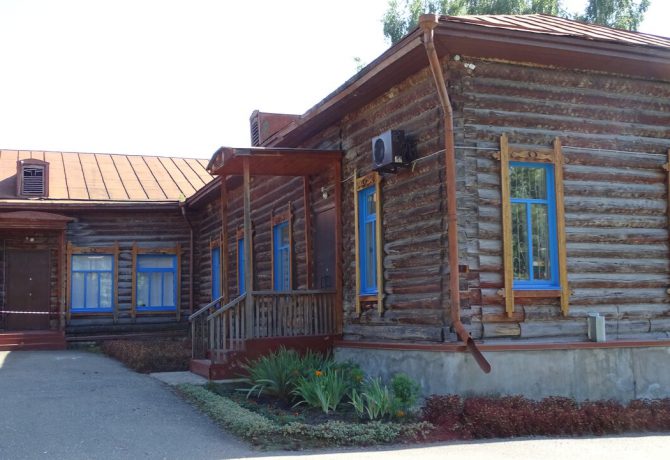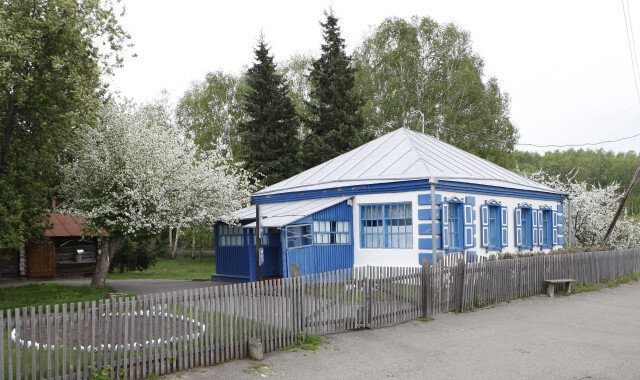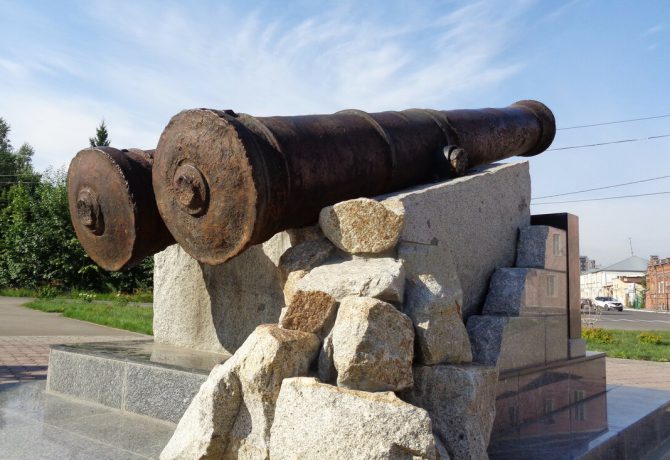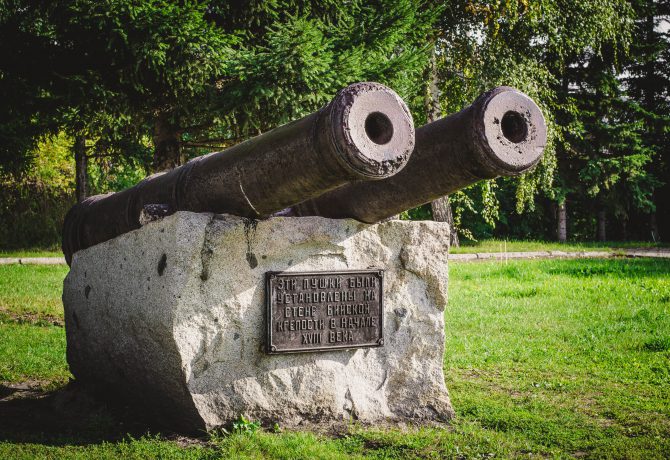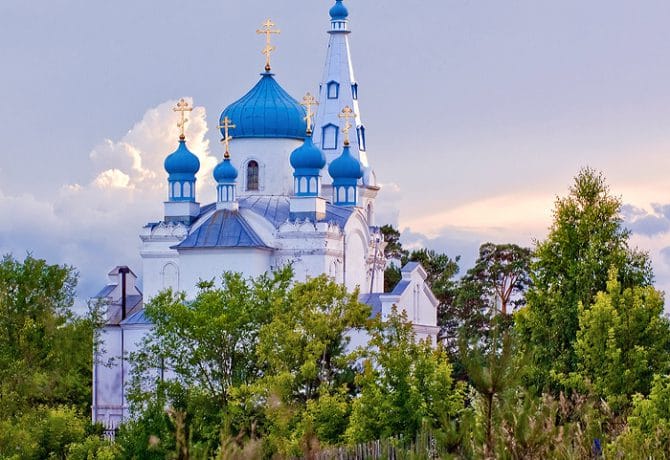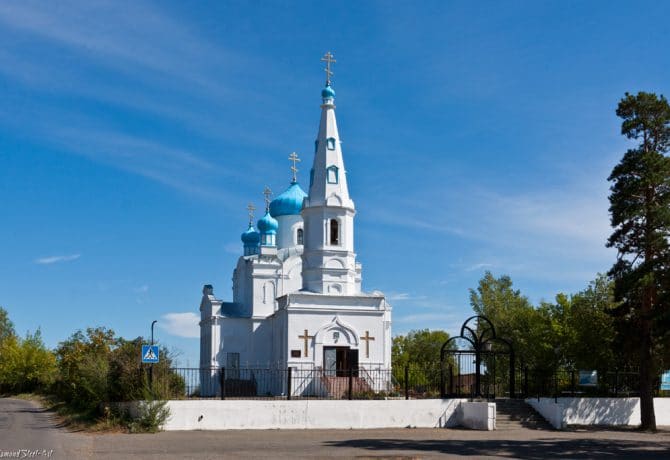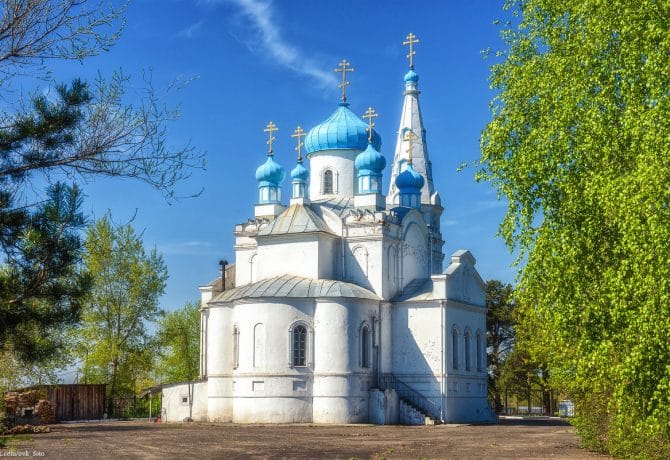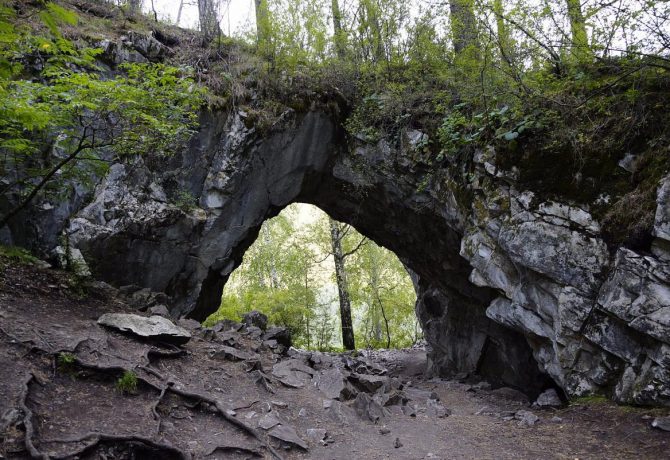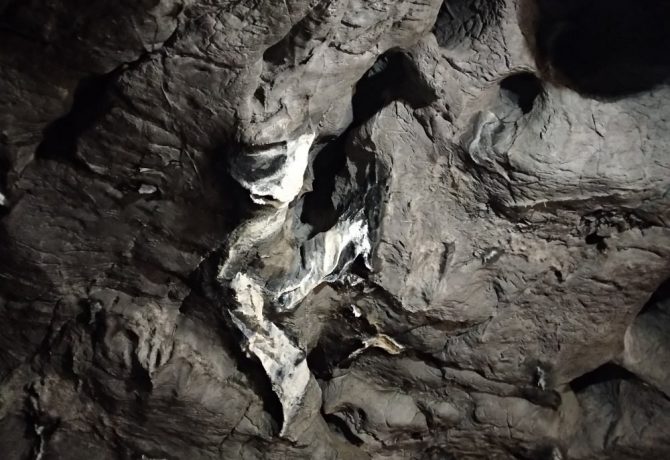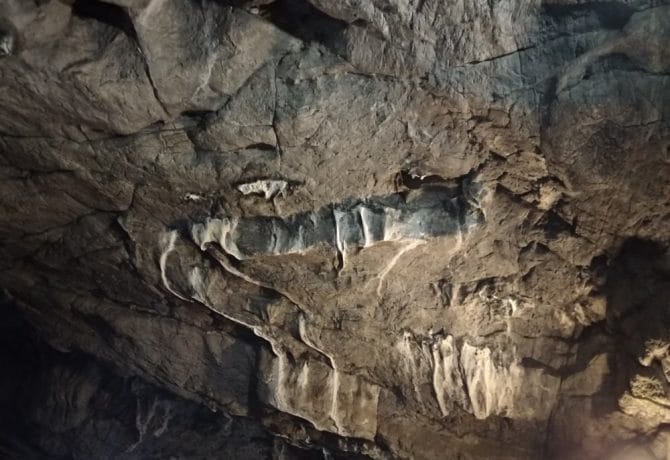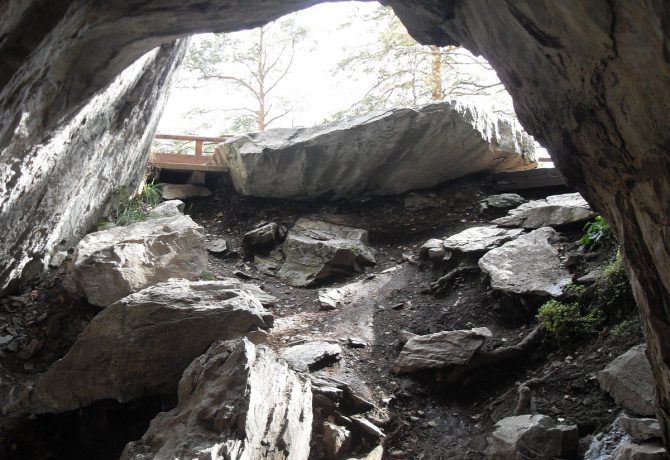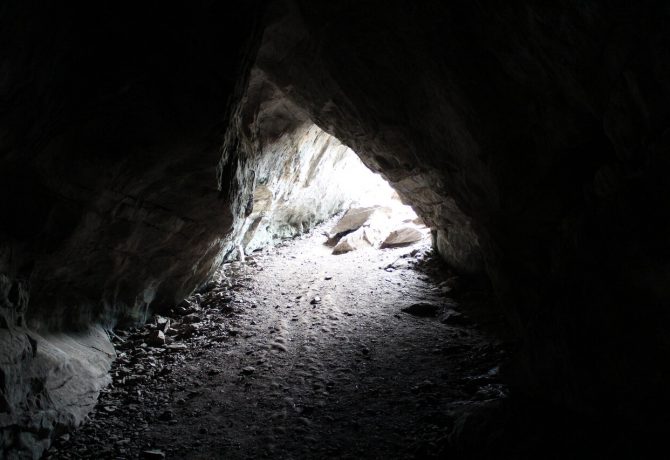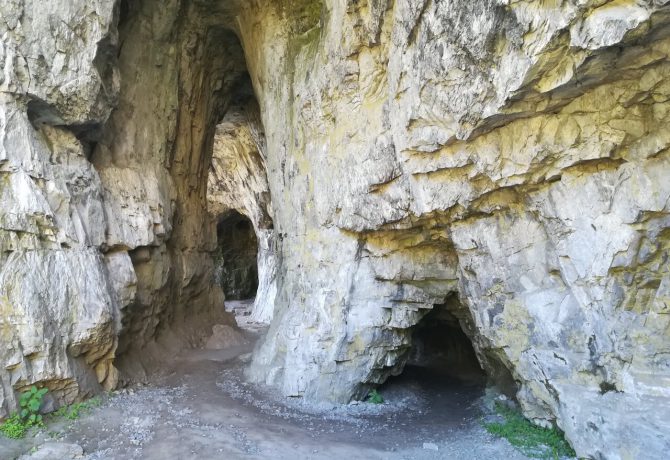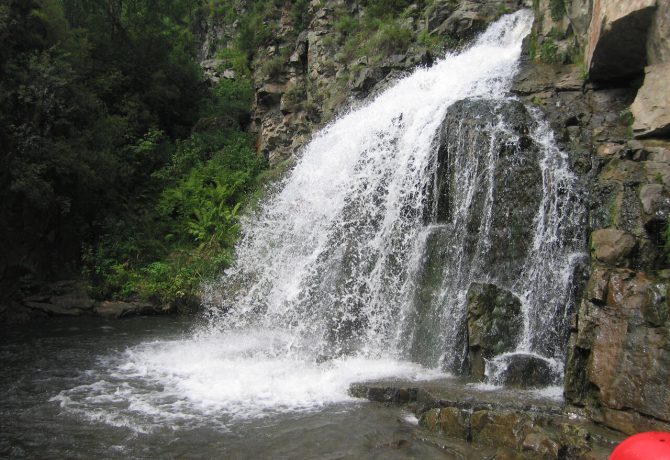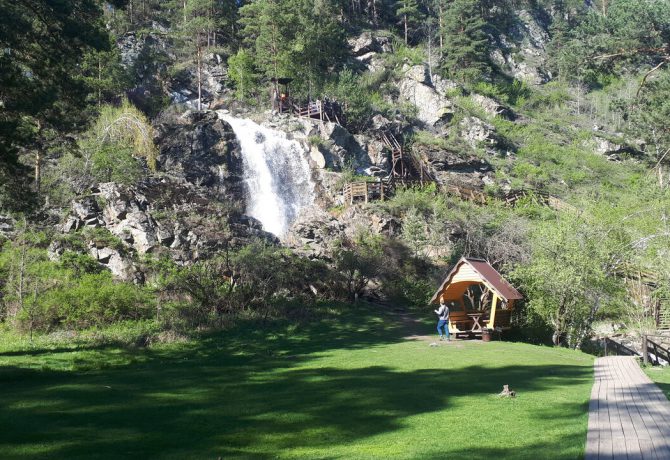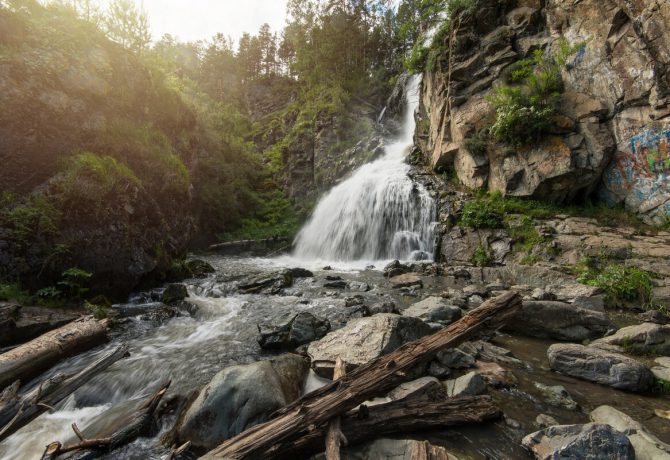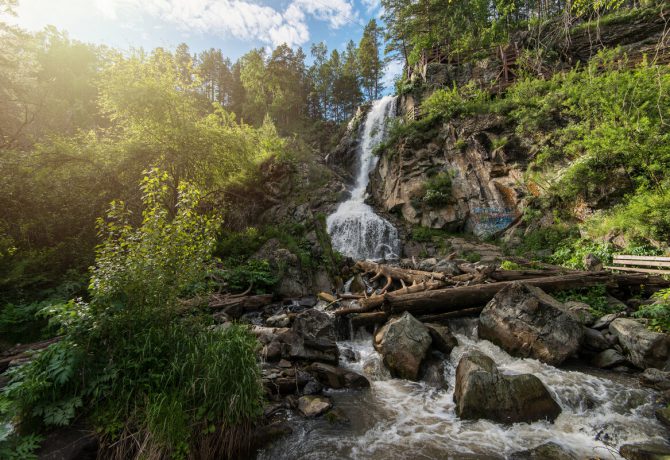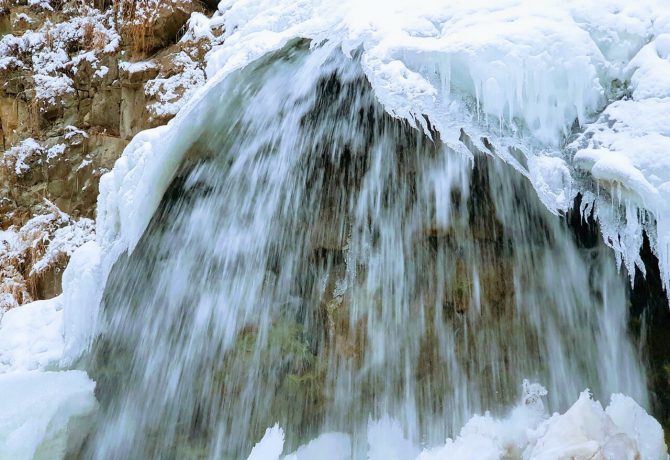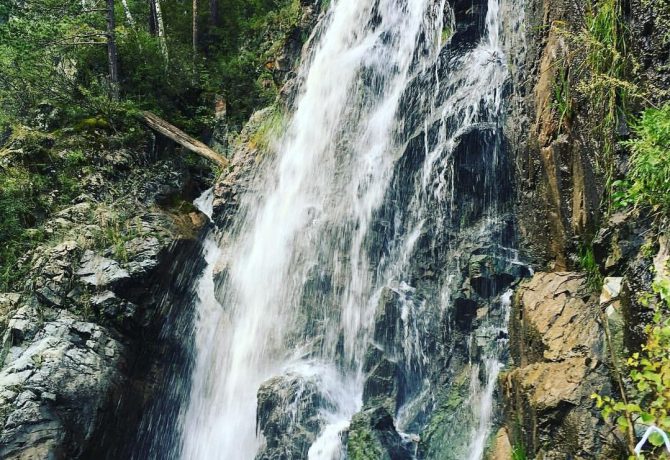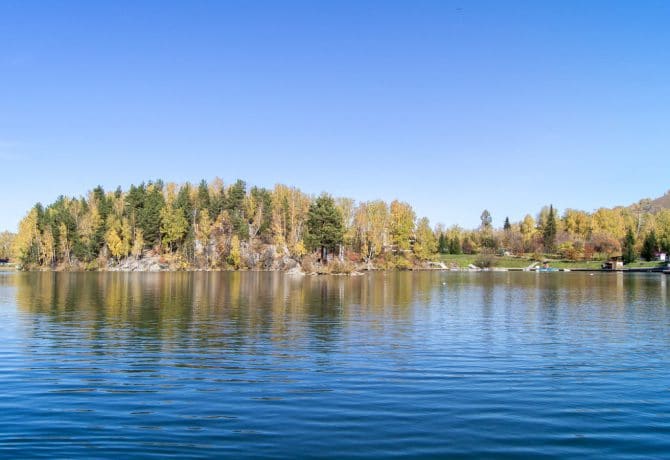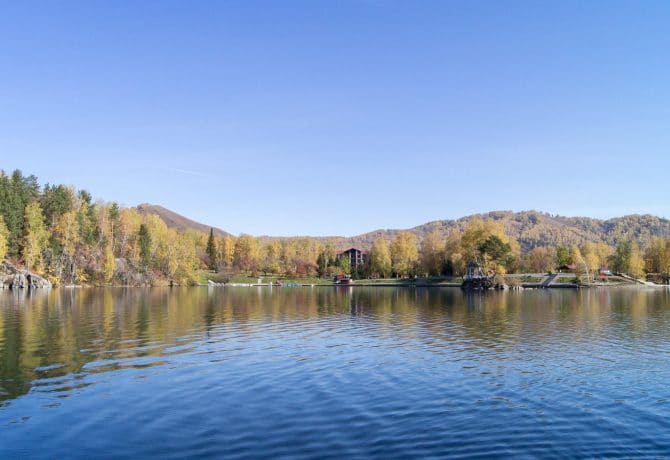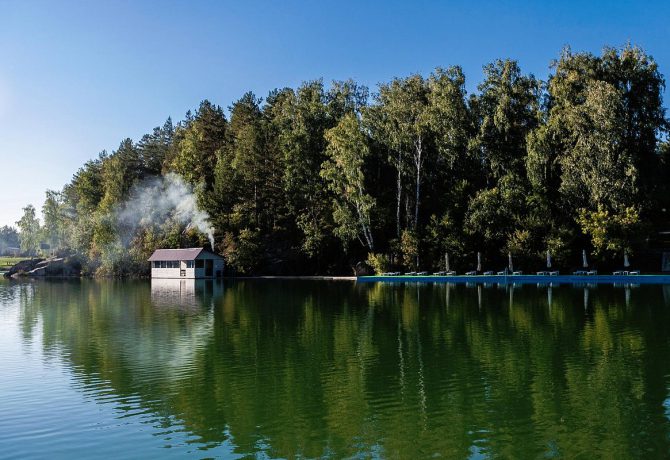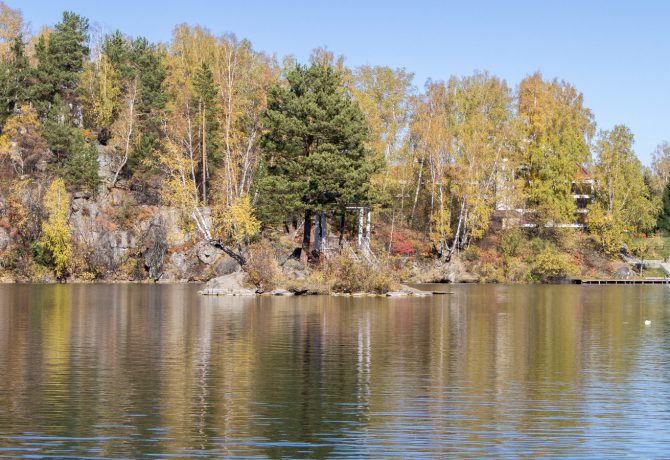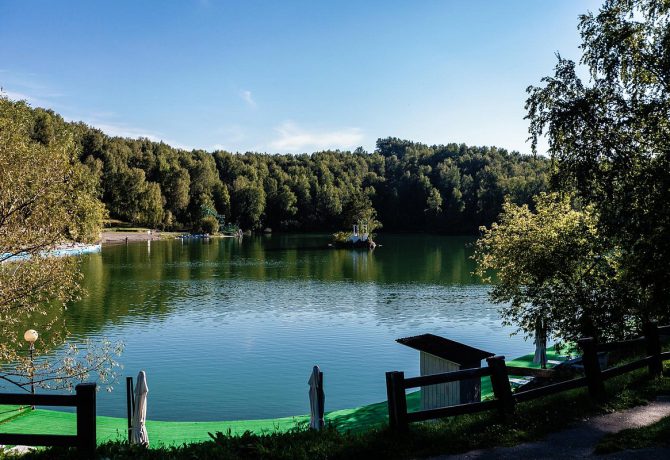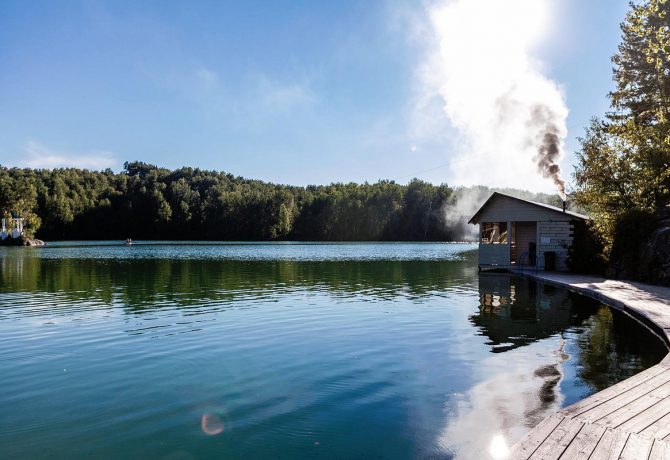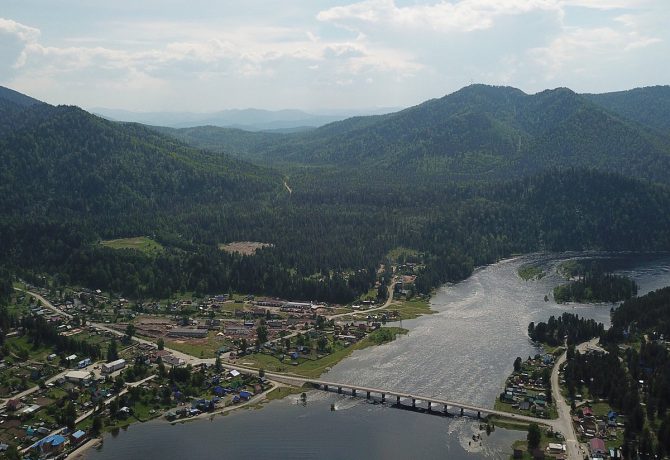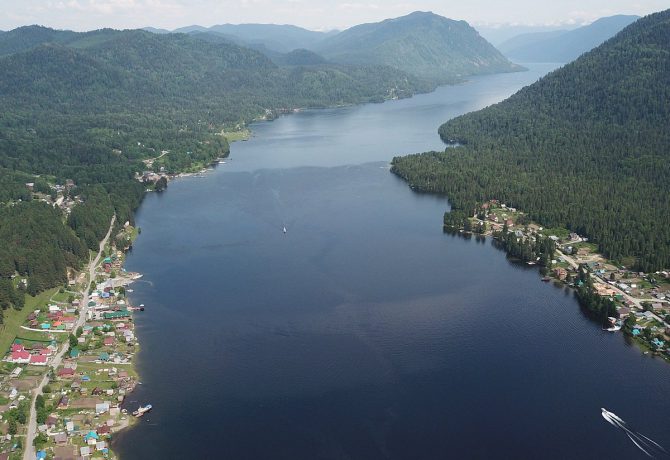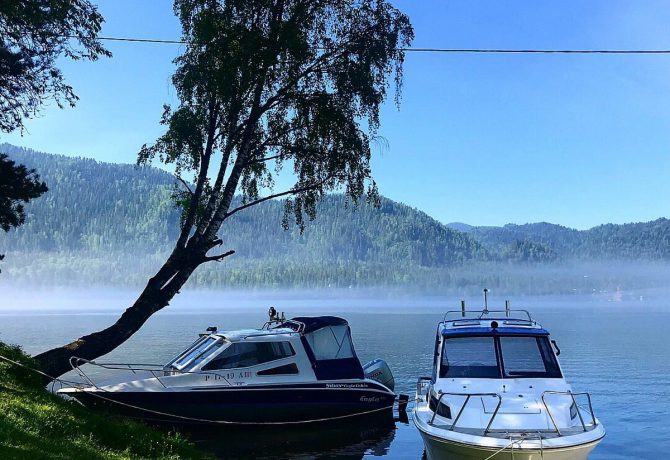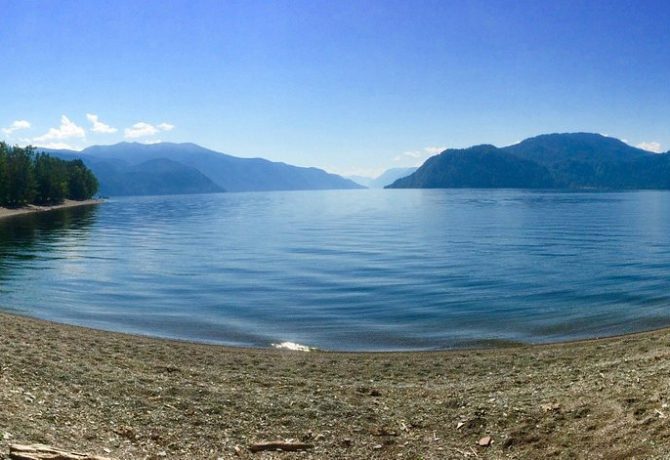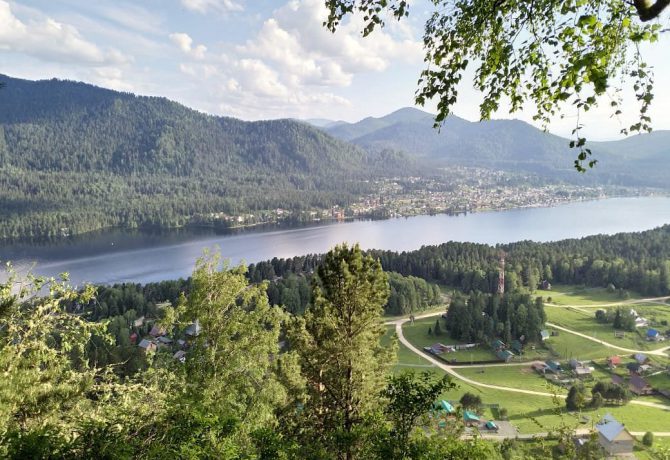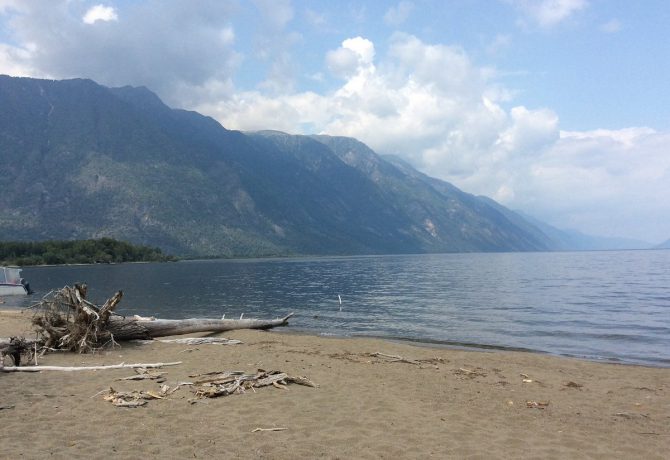The small town of Biysk is a vivid example of the fact that “in the outback of Siberian ores” can hide many unique cultural and architectural attractions. The settlement was founded in 1709 by decree of Peter the Great. Then on the site of the modern city was located Bikatun jail. During its centuries-old history, the city has experienced both flowering and falls, and complete destruction. But it was he who was destined to make a significant contribution to the accession to the Russian Empire of a mountainous country, which in ancient times was inhabited by the subjects of the Dzungarian Khan. Modern Biysk attracts travelers from all over Russia. Someone comes here as part of an excursion group, someone to get acquainted with its surroundings on their own. Thanks to the numerous attractions in Biysk, you can stay for a few days, and the time spent in these parts will give vivid and unforgettable memories.
- 1 Historic city center
- 2 Museum of Local Lore named after V. V. Bianchi
- 3 Chui Tract Museum
- 4 House of brothers of merchants Mezentsev
- 5 Mansion of merchant Vasenev
- 6 Assumption Cathedral
- 7 Trading house of merchant Ignatiev
- 8 Museum of the History of the Altai Spiritual Mission
- 9 Clock Museum
- 10 Memorial wall of the royal dynasty of the Romanovs
- 11 Church of Demetrius of Rostov
- 12 Museum-Reserve V.M. Shukshina
- 13 Biysk Fortress
- 14 Church of St. Alexander Nevsky
- 15 Tavda caves
- 16 Kamyshen waterfall
- 17 Lake Aya
- 18 Teletskoye Lake
- 19 Attractions Biysk on map
Historic city center
A walk through the historical center of the city of Biysk gives you the opportunity to touch the centuries-old history of the region for a moment. It is very beautiful and peculiar. In the city there are two hundred monuments of history and architecture and most of them are concentrated in the old town. Here, every house, every building impresses with its style and exterior. Each building has an individual architectural style of design and keeps memorable events of the historical past of the city. Walking through the streets, guests will be able to see amazing mansions, buildings of the XIX century. Most of the buildings to this day have been preserved in good condition. Some of them house libraries, schools and even public services. You can walk through the historic center of the city both independently and as part of an excursion group. During the tour, tourists will be told how the city developed, what events took place within its walls.
Address: Biysk, Sovetskaya, Tolstoy and Lenin streets
Museum of Local Lore named after V. V. Bianchi
This is the first folk museum of Siberia. It was opened on April 14, 1920. The basis for the discovery was the amazing collection of the Zemstvo Council. At the origins of the creation were V.V. Bianchi, archaeologist S.M. Sergeev, sculptor V.A. Sengalevich. Now the museum is located in 4 buildings. There are 18 halls of permanent exhibitions for visitors. 25 exhibitions are held annually. The museum’s funds number 140 thousand historical artifacts and about 20 thousand books. The earliest belong to the XVII century.
In the historical department, visitors will be able to see a real sarcophagus, a collection of watches and samovars, weapons from Scythian burial mounds, cult items of Altai shamans, etc. In the fund of archeology there are at least 70 thousand exhibits. Here is the best collection of wooden carvings in Siberia. The funds have created a unique collection of Altai petroglyphs. It includes about 300 paintings of different eras, made in a wide variety of styles and techniques.
It will be interesting to visit the department “Museum of the Chui Tract”. In it you can see all the climatic zones of Altai, rare representatives of flora and fauna.
The museum is open from Wednesday to Sunday, from 9:00 to 17:00. Closed on Monday and Tuesday.
Address: Biysk, Lenin str., 134
Official site: https:// Bee-museum.rf/index.php
Chui Tract Museum
The museum is located in the central part of the city. Structurally, it is part of the Local Lore Museum named after V.V. Bianca. It is located in the building of the merchant Varvinsky, the construction of which dates back to 1911. The museum itself moved to this building in 1928.
In 2013, a memorial sign to the drivers and builders of the Chui tract was installed near the museum. It is a horseshoe with a wheel inside. From the Museum of the Chui tract originates the main road of Altai. That is why this place was called the “zero kilometer of the Chui tract”. During a visit to the museum, guests will be able to get acquainted with several collections: paleontological, geological, botanical and zoological. Geological exhibits deserve special interest. Here are collected ornamental stones of the Altai Mountains, agates, jades, various ores. All expositions of the paleontological department were found in the Altai Territory. Guests will be able to see the bones of mammoth, bison, bison, ancient fossils. The age of some specimens is more than 300 million. Years. Also in the museum there is a relief map of the area, the very first geographical maps, road drawings, models of the first cars and many other things.
The museum welcomes its guests from Wednesday to Sunday from 9:00 to 17:00. Closed on Monday and Tuesday.
Address: Biysk, Sovetskaya str., 42
Official site: https:// Bee-museum.rf/o-muzee/otdely-muzeya/otdel-muzey-chuyskogo-trakta/
House of brothers of merchants Mezentsev
The Mezentsev House is an architectural landmark of the city. It is a fairly large two-story building made of brick. The building was erected in 1910. On the first floor there were trading halls, and on the second floor there were living rooms. Four years later, the post and telegraph office moved into the building. Now it is a branch of the Russian Post.
The Mezentsev house is made in white. Its facades were decorated with brick patterns and pilasters. At the main entrance there are 2 columns that supported a small portico. A striking element of the building are the large arched windows of the first floor. They are framed by brick ornaments, while the windows on the second floor are devoid of all decorations.
Address: Sovetskaya, 34
Mansion of merchant Vasenev
At the end of the XIX century, a two-story building made of red brick was built in Biysk – a mansion that Alexei Danilovich Vasenev built for his own family. The merchant traveled a lot in China and Mongolia, and his name is often placed next to famous researchers of continental Asia – Przhevalsky, Obruchev, Potanin or Pevtsov.
In 1900, Vasenev temporarily left his commercial activities and began to build a house. For these purposes, he bought a land plot on the corner of Sovetskaya Street and Gileev Lane, just a few steps from the Mezentsevs’ house.
The two-story building was erected in a pseudo-Russian style, from the side it resembled a fortress. Someone sees in it a similarity with the Kremlin, but such a feature of the structure gives a red brick. The mansion was decorated with relief windows, various decorative superstructures, a chic polygonal tower.
In 1917, just a couple of months before the Revolution, the owner died. The building was nationalized, and within its walls the city library was located. Since 1928, a cultural center for educators has been created in the House. And in 2007, it was marked with a memorial plaque.
Address: Sovetskaya str., 30
Assumption Cathedral
Snow-white Uspensky is the most recognizable building of Biysk. It rises majestically over the historic part of the city and has been the House of the Lord for many parishioners for many years. The cathedral was built in the Russian-Byzantine style. It is decorated with blue domes. And above its heads and the central rotunda rises a three-tiered bell tower. The temple was built with money collected by local residents and merchants. In 1903 it was consecrated.
In 1930, the property of the Trinity Cathedral became the property of the Assumption Church, which was completely destroyed. After 2 years, the building of the Assumption Cathedral itself began to be used as a granary. Only in 1947 the religious structure was returned to the Orthodox community. And already in the first Easter service, more than 5 thousand people gathered at its walls. It took about 30 years to restore the building of the temple, but thanks to a universal effort, it managed to return to its original appearance.
In 1994, the Assumption Church was renamed the cathedral, and three years later it was given the status of cathedral.
Address: 13, Sovastkaya str.
Official site: http://uspenie22.cerkov.ru/
Trading house of merchant Ignatiev
One of the most luxurious buildings in the city of Biysk is considered to be the Trading House of the merchant Ignatiev. Shopping arcades were built in 1914 and literally immediately local shops began to work actively in the building. The trading house is made in the style of Siberian Baroque. Its facades were decorated with many decorations.
During the revolution of 1917, the Ignatieff House ceased to exist as a trading zone. But literally one year later, the shops in its walls still returned. A significant part of the internal premises was transferred to the use of the state bank. During the Civil War, the building of the Trading House was badly damaged. Two decorative porches were completely destroyed, several internal walls were destroyed, as well as cornices above the windows.
Now the Trading House of the merchant Ignatiev has been fully restored. It has state organizations. And to get acquainted with the external exterior and interior can absolutely every guest of the city.
Address: Biysk, Sovetskaya str., 4a
Museum of the History of the Altai Spiritual Mission
The Museum presents unique ancient objects of culture and life of the XVII-XX centuries. It is located on the territory of the complex “Biysk Bishop’s Compound”. The museum received its first visitors on January 28, 2008. It was on this day that the first exhibitions of expositions were opened.
The museum funds contain about 50 thousand exhibits. The oldest exhibit is the book “Oktoich”, issued in 1618. In addition, the museum funds contain the first printed “Apostle” of 1633 and “Psalter” of 1634.
Also in the museum you can see expositions that relate directly to the Altai – the First Altai Grammar (1869), “Trebnik in the language of the Altai foreigners” (1890). Here are collected unique icons, crosses, greeting cards, calendars, candlesticks, chests, towels, irons, towels, towels, towels, photographs.
Every year, at least 700 excursions are held within the walls of the museum. It is eagerly visited by both tourists and pilgrims.
Address: Biysk, Irkutsk str., 1/1
Clock Museum
The Biysk Museum is one of the three hour museums in Russia. This is an architectural monument that was built in 1911. Now the museum presents more than 1400 exhibits of different years and eras. It is interesting that the Clock Museum is located in one of the oldest educational institutions of the city – in school No. 4. The museum is located in its eastern part and occupies 8 rooms on different floors. Each room is dedicated to a certain era, starting from merchant times and ending with the abundance of hours of the XXI century. In the museum you can trace how the history of the country, and in particular Altai, was intertwined with the production of watches.
Address: Biysk, Muromtsevsky lane, 9
Memorial wall of the royal dynasty of the Romanovs
The sculptural composition dedicated to the Romanov royal family was opened in 2018. A talented sculptor and artist – Isakov worked on its creation. The work on the creation of the memorial wall lasted a whole year. The composition depicts Nicholas II himself along with his wife, daughters and other family members. Over the Romanov family is applied the royal coat of arms. He is held by two angels, made in the form of bas-reliefs. The royal family was made of bronze in full size.
Address: Biysk, Alexandrovsky Park
Church of Demetrius of Rostov
The church was built at the end of the XIX century, then it was called the Kazan Temple. During its history, it burned down, rebuilt, it housed a warehouse, a soldier’s club and even a stable. In 1990, in a dilapidated form, the building was returned to the Russian Orthodox Church. In 1994, the temple was consecrated and renamed the Church of Dmitry Rostovsky. Within its walls, ancient images that survived during the times of persecution are still stored. This is the icon of St. Demetrius, the icon of Nicholas the Wonderworker, the icon of Panteleimon.
Address: Mukhacheva str., 228b
Surroundings
Having got acquainted with all the famous sights in the city of Biysk, it is worth going to its surroundings. Not far from the village there are beautiful natural objects, religious buildings, monuments of history and architecture.
Museum-Reserve V.M. Shukshina
The museum was opened in 1978 as a branch of the Altai Museum of Local Lore. The idea of creating a memorial museum arose immediately after the death of the legendary writer and film director Vasily Shukshin. A month after the death of the cultural figure, schoolchildren under the guidance of the head teacher on the basis of a local school designed a stand dedicated to his life and work. In 1976, the school was named after V.M. Shukshin. And in May of the same year, a school museum was opened in the educational institution on the third floor. It was in 1976 that the first Shukshin readings were held, which were organized by the Altai Writers’ Organization.
The official opening of the museum took place at the third Shukshin readings. The first exposition was presented in the house that Vasily Shukshin purchased for his mother. With each subsequent city, the museum’s collection was only replenished. In different years, several buildings were transferred to the ownership of the museum. The modern museum complex includes 8 buildings, 4 buildings. It occupies an area of 1.5 hectares.
Address: Srostki, Sovastka str., 86
Official site: http://shukshin-museum.ru/
Biysk Fortress
Biysk fortress was a guard fortification, which was built in 1718 on one of the banks of the river Biya. The wooden structure in the plan was quadrangular. The perimeter of the walls was 200 meters. In the corners were installed three-story towers, the height of each 15 meters. In addition to the walls, the protective function was performed by an external defensive fence, consisting of a moat, hollows and slingshots. Inside the fortress itself were built barns, a powder cellar, the commandant’s house, a cookhouse, a chapel. The fortress was located in the place where now in modern Biysk there is a square named after Fomchenko.
During the history of its existence, the fortress has undergone three modernizations – in 1748-1751, 1756-1761, 1768-1778. During the first modernization, the perimeter of the walls was increased to 650 meters. The building already had five wooden towers, each of which had its own name – General, Passing, Kuznetsk, Bikatun, Moscow. There were 12-pounder fortress guns. During the second modernization, the area of the fortress was increased to 12 hectares. On its territory was built a pentagonal artillery bastion for ten large-caliber guns.
In 1782, the fortress received the status of a city. And in 1846 it was removed from the balance of the War Department. It began to be used as a place of political exile.
Address: Telegrafny lane
Church of St. Alexander Nevsky
On the steep bank, at the very beginning of the source of the famous Siberian Ob River, stands a snow-white temple with blue domes in the name of Alexander Nevsky, an Orthodox warrior and defender of our Motherland. This temple became the first religious building in the Altai, built after many years of atheism and God-fighting.
A team of religious builders from Western Ukraine worked on the construction of the temple. The project of the future temple structure was based on the architectural plan of the KorobeynikovSkaya Church. Construction lasted almost two years. The iconostasis was made by employees of the association “Sibpribormash”. The painting of the iconostasis was done by Vladimir Cheprov. He also painted the inner walls of the temple. In 1993, the domes were consecrated. The first crosses, which were made at the plant in Biysk, broke from a strong gust of wind. Later they were ordered in St. Petersburg, where metal coated with zirconium was used for the production of crosses.
The Church of St. Alexander Nevsky was consecrated on February 27, 1994. The ceremony was attended by Bishop Tikhon of Barnaul and Novosibirsk. Now the temple is open not only for pilgrims, but also for ordinary travelers who can admire its grandeur and beauty.
Address: Odintsovsky Posad village, Rozhdestvenskaya str., 65
Tavda caves
Tavda caves are the main attraction not only in the vicinity of Biysk, but throughout the Altai. They are located on the left bank of the Katun River, belong to the tourist complex “Turquoise Katun”. The caves got their name in honor of the village of Tavdy. Once it was not far from them, but now this settlement does not exist. In total, the Tavda caves include about 30 caves, with a total length of 5 kilometers. The entrances are located in steep cliffs and cliffs, but this does not prevent tourists from inspecting them.
The caves that are most visited by travelers are more or less ennobled. They have electricity, steps. Some caves have several entrances. That is why the Tavda caves are called a whole system. At the entrance to all easily accessible caves there are turnstiles, as their visit is paid.
It is believed that in ancient times our ancestors lived in caves. This is evidenced by the archaeological research. During the excavations, exhibits relating to the Bronze and Iron Age were found. A little later, old Believers lived in the Tavda caves. The caves attracted the attention of treasure hunters, because based on local legends, the gold of Kolchak himself is buried here.
The most visited of the entire system is the Big Tavda Cave. It is also called “Tavdinskaya-1” or “Maiden tears”. The entrance to it is just a few meters from the road.
Kamyshen waterfall
Another natural attraction, located on the left bank of the Katun River, is the Kamyshensky waterfall. This is one of the most accessible Gorno-Altai waterfalls. It is located in the Shebalinsky district, just 400 meters from the mouth of the kamyshla river. The nearest villages are Barangol and Ust-Sema. In 1996, the waterfall became a natural monument of republican significance.
The total height of the Kamyshen waterfall is 12 meters, it consists of two cascades. Despite its insignificant height, it makes a vivid impression. Breaking on the rocks, the water streams shimmer stunningly in the sun. The most beautiful is the main rocky cascade. The water flow remains cold even in the warm season. But this does not prevent tourists from swimming in it in the summer.
In winter, the waterfall freezes, but does not cease to attract the gaze of vacationers. In winter, people come here for bright photos against the background of frozen cascades.
The locals have an interesting legend about the origin of the waterfall. Once lived in these places two tribes that fought constant battles among themselves. The leader of one of the tribes had a daughter of unprecedented beauty La. To protect the only heiress, he ordered to build a separate yurt, settle her there and put a guard so that no one could admire her beauty. But also this leader had a faithful servant – the hero Kamysh, who took part in all campaigns and battles. One day after being wounded, Kamysh was forced to stay in the village to heal his wounds. The chief entrusted him with the protection of his daughter. But then no one knew that the young had long secretly loved each other. After returning, the leader found his daughter in the arms of the hero. It was ordered to immediately throw Reeds off the cliff, but La jumped after him. His father could not stand such grief and died, and buried him on the top of this mountain. Soon a waterfall appeared on this place, which was named after the lovers – Kamysh-La.
However, despite all these beautiful stories, there is information that the waterfall arose during the construction of a dam on the Kamyshla River. In the 30s of the twentieth century, the riverbed was changed so that the water descended with a significant difference in altitude. This made it possible to build a mill in these places, which was used as a sawmill during the war years.
Lake Aya
This is one of the few reservoirs of the Altai Mountains, in which you can comfortably swim in the summer. Due to the fact that Lake Aya is small, the water in it in the warm period warms up to +21 degrees. There is a reservoir near the river of the same name and the village. Sometimes it is called Yaysky. It covers an area of 9 hectares. In size, it is compared in 4-5 Olympic pools, but this is enough to swim here on an air mattress or boat.
The reservoir is fed by rains and springs. In the dry period, the water level in it decreases slightly, and during heavy rains, on the contrary, it rises. However, such a fluctuation does not affect the quality of recreation of tourists, which every year here becomes only more.
Lake Aya is 500 metres from the left bank of the Katun River. It is 50 meters above the river level. Geologists suggest that the reservoir was formed about 20-25 million. years ago. The shape of the lake is sickle-shaped, perhaps because of this it received such a name. After all, “aya” from Altai translates as “moon”. In the middle of the lake there is a small natural island on which the pavilion is built. Having reached it, tourists can relax in it for some time. People call this pavilion “Gazebo of Love”.
The lake has a well-developed tourist infrastructure. Water slides are installed, boats and catamarans are rented. Nearby there are hotels, guest houses, camp sites, which allows you to stay in this amazing region for several days. All bases are engaged in the organization of excursions. Discos are held for young people.
Teletskoye Lake
Teletskoye Lake is a real pearl of the Altai Mountains, which annually attracts thousands of travelers. This is the land of pristine nature, the locals revere it as a shrine. Until now, the exact origin of the basin of the lake is not known. Some scientists are inclined to believe that it was formed as a result of the movement of lithospheric plates, the second are sure that the lake appeared due to the activity of the Chulyshman glacier. Despite the many mysteries, experts believe that the reservoir was formed during the Paleozoic as a result of the deflection of the earth’s crust.
Teletskoye Lake is located at an altitude of 434 meters above sea level. Partly belongs to the Ulagansky, and partly to the Turochak district. The length of the reservoir is 77 km, in the widest place the water spills up to 5 km. The shape resembles a mirror-inverted letter “G”. About 70 rivers flow into the lake. Thanks to the crystal clear water, you can see the bottom at a depth of 10-14 meters. The maximum depth of the lake is 325 meters.
Around the mysterious pond there are many legends and legends. One of these legends says that at the bottom of the lake there are petrified horsemen of Genghis Khan, who tried to cross the reservoir by swimming. But the icy water paralyzed the soldiers and they all drowned. Despite the modern equipment and machinery, divers are still not able to sink to the bottom of the reservoir to confirm or refute local legends. To date, divers have managed to dive to a maximum depth of 100 meters.
Around the lake is well developed infrastructure. On the north shore there is a large selection of hotels and guest houses. Camping enthusiasts also come here, but they are usually located on the south side of the reservoir.
The sights of Biysk and its surroundings amaze with their diversity and beauty. To get to know them in one day is simply unrealistic. When planning a holiday in gorny Altai, try to allocate a few days to see all the beauties of the region.


